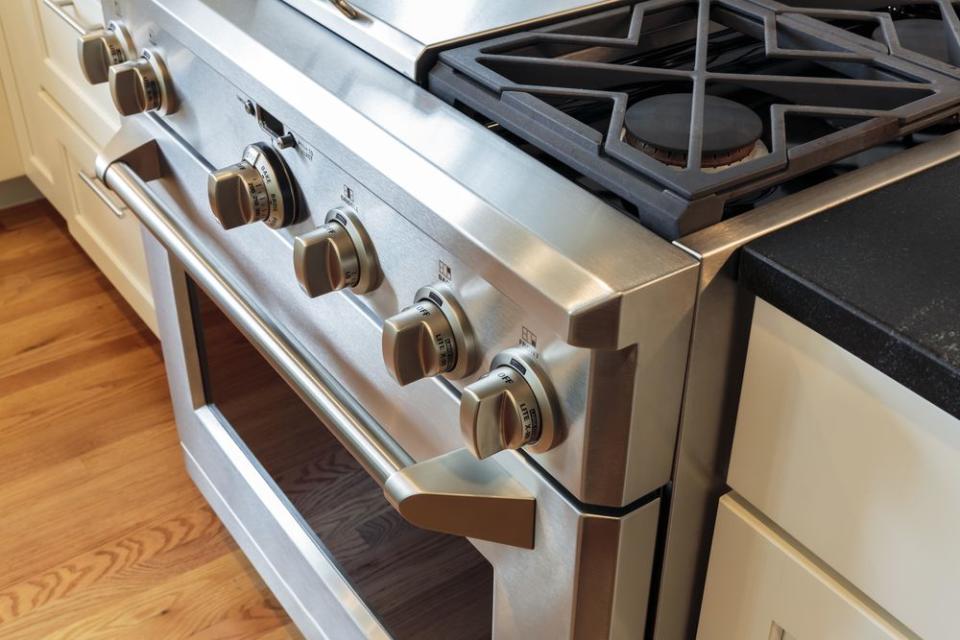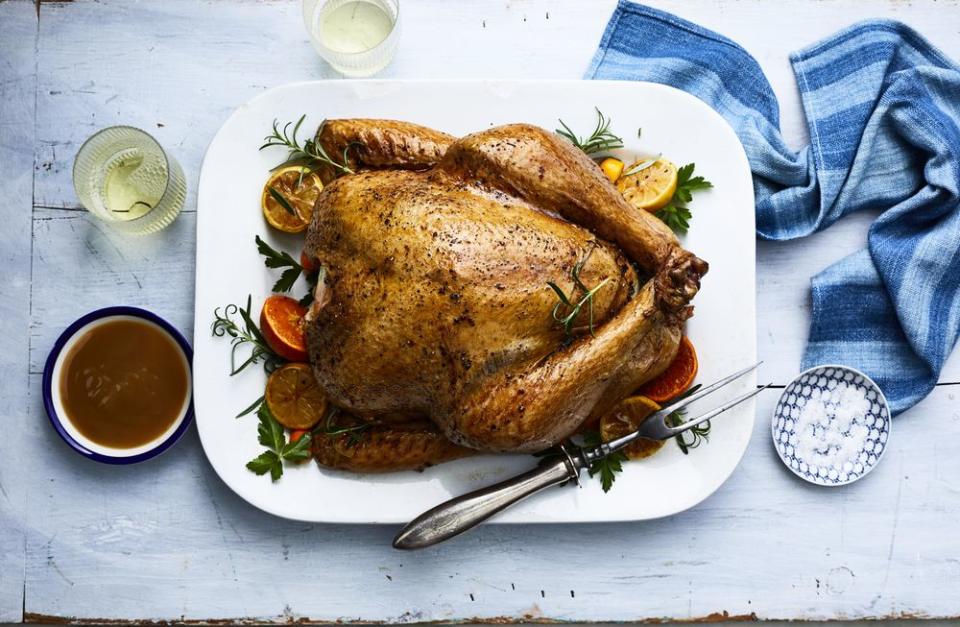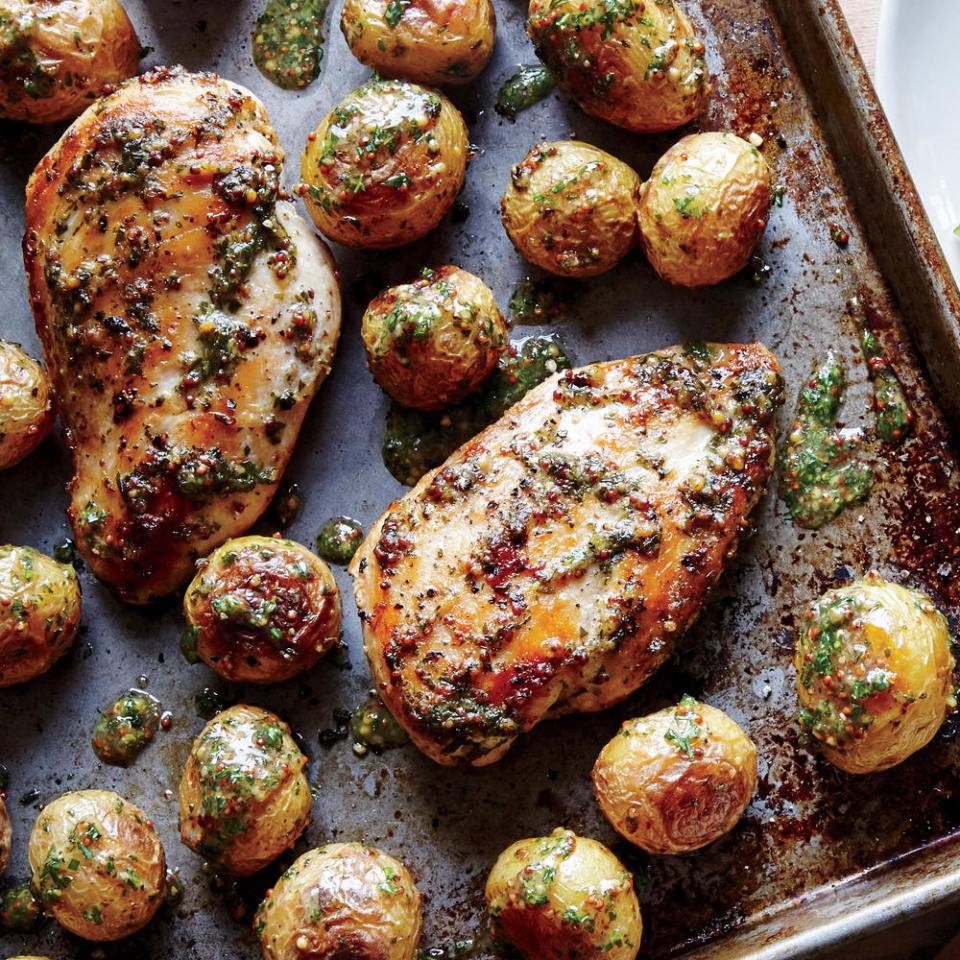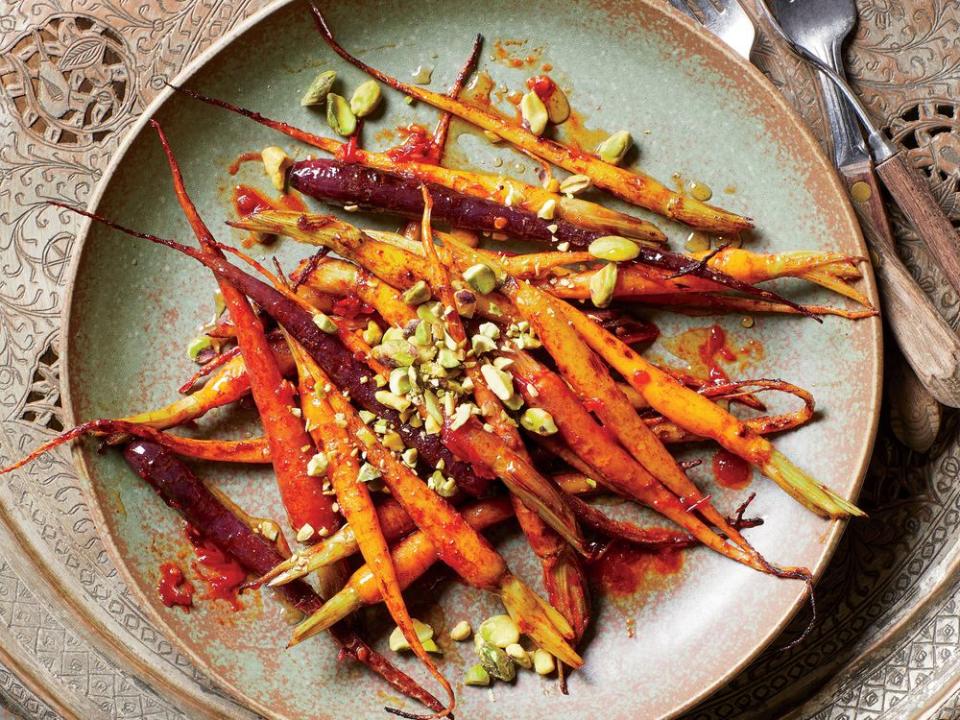What Is a Convection Oven—and What Should You Cook In It?
An oven is an oven, right? Wrong. Many professional chefs swear by a convection oven for evenly cooked, perfectly browned foods. So should you invest in one for your own kitchen?
Understanding why, when, and how to use a convection oven (or a convection setting) can make a world of difference in how your food turns out. Here’s what you need to know about convection oven cooking:
Convection Oven Vs. Conventional Oven

A conventional (or traditional) oven cooks food by heating the air inside of it. The air inside the oven remains stagnant. A convection oven, meanwhile, has built-in fans that circulate the air during the cooking process. Many ovens have both a convection and a conventional setting, allowing you to choose between the two.
Convection Oven Pros
The convection setting on your oven can benefit your food in a number of ways, like:
It cooks food evenly.
Conventional ovens can have hot spots, or areas in the oven that heat faster and higher than other areas. This can result in unevenly cooked food, where one side cooks faster than the other. The circulating air of a convection oven keeps the temperature even throughout cooking, which is especially helpful when roasting a whole turkey or toasting nuts.

It cooks food faster.
Food cooks about 25 percent faster in a convection oven, according to Appliances Connection, because the hot air blowing directly onto the food speeds up chemical reactions within the oven.
It’s better at browning.
If you’re after a crispy or crunchy texture, reach for the convection setting. Conventional ovens are prone to humidity because of a lack of ventilation. Convection ovens, however, produce dry air that caramelizes sugars during roasting.
It’s more energy efficient.
Faster cooking times mean you’re using less energy. Theoretically, using the convection setting can save you money and help the environment.
Convection Oven Cons
Though it can often improve your food, a convection oven isn’t always appropriate. In fact, you should probably steer clear of it when you’re making delicate foods like cakes, souffles, breads, and custard. The air circulation can inhibit the setting process, causing batter not to rise properly.
Some people even claim that you should never use the convection setting for cooking American baked goods like biscuits, cakes, and cookies. Stella Parks, an award-winning pastry chef, took to Twitter last year to explain the theory.
In American baked goods, convection should never be used unless a recipe specifically calls for it. In a home oven, the hot, dry air accelerates crust formation in cakes, cookies, and biscuits which is generally counterproductive to desired rise.
— Stella Parks (@BraveTart) June 11, 2018
Many American recipes were developed using a conventional oven and actually benefit from the moisture that comes from humidity, she says. Dry air will speed up crust formation, which may affect how (and if) your recipe rises during the cooking process.
Using the convection setting during baking could result in flat, fluff-less cookies, cakes, and biscuits—and nobody wants that.
What Can You Use If You Don’t Have a Convection Oven?
WATCH: How to Use an Air Fryer
If your oven doesn’t have a convection setting, you don’t have to buy a new oven to reap the rewards of convection cooking. Believe it or not, you can often substitute an air fryer for the convection setting. Both appliances work by circulating hot air around the food being cooked, providing quick, crispy, and evenly cooked results. While they’re not exactly the same thing—the hot air in an air fryer circulates much faster, and is not blown directly onto the food—you should definitely consider trying it out before splurging on a new oven. One caveat: Air fryers are much smaller than convection ovens—so plan your meal accordingly.
Related: Why You Should NEVER Cook Steak in Your Air Fryer
How to Use a Convection Oven

Though using the convection setting on your oven is as simple as pushing a button, there are a few things you should know:
You might need to adjust recipes.
Most recipes you find in cookbooks and online were developed using a traditional oven, so you’ll have to tweak them a bit. Lowering the the recommended temperature by 25 degrees should do the trick. Since food cooks faster in a convection oven, you’ll need to check it’s progress frequently to make sure it’s not burning.
Give your food room to breathe.
You may have heard warnings against overcrowding the pan during roasting (we’re looking at you, Julia Child fans), but it’s especially important to make sure your food is spaced properly when you’re using a convection oven. Convection relies on air being able to circulate, and packing too much onto one pan can hinder that process. You should also avoid crowding the oven with too many pans at one time, as you could accidentally block a fan.
Use low-sided or rimless baking sheets and pans.
Again, if you want to take full advantage of the convection setting, you should make sure that nothing is keeping the moving air from blowing onto the food, and that includes the sides of your pans. It’s all about circulation, people!
What Can You Cook In a Convection Oven?

Utilizing the convection setting can make good food into great food. Want proof? We have plenty of convection oven recipes. For instance:
Harissa-Roasted Carrots With Pistachios
Roasted Brussels Sprouts With Mustard Dressing

